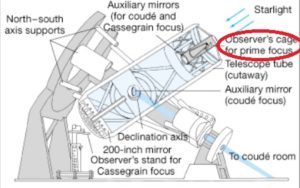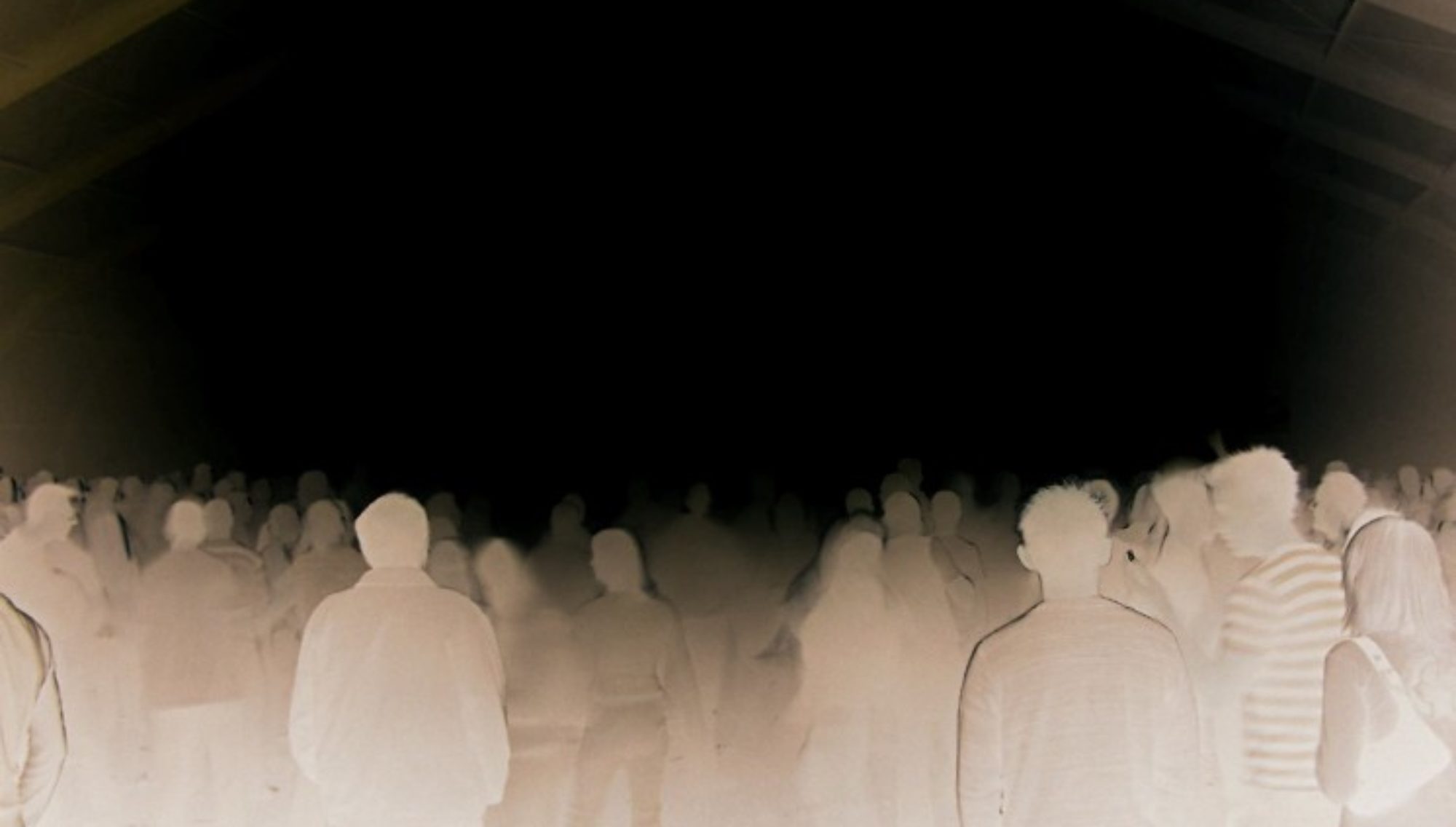“Something frightful has been going on for a long time.”
– James Shelby Downard, Sirius Rising
Introduction to Sirius
The heliacal rising (i.e., rising along with the sun) of the star Sirius is an annual celestial event bristling with symbolic import. In terms of literal astronomy, this is the time when the Sirius – otherwise known as Canis Major, or the “Dog Star” – is first visible in the night sky.[1] However, this is merely the exoteric level of the Sirius story. There is a veritable cauldron of symbolism bubbling just beneath the surface. S
For Sirius has a rich and layered history in mythology and mystery religion. And it is at this deeper, often hidden – or esoteric – level that has likely brought you to this page.
According to some commentators, Sirius was known, in priestly circles during ancient Egyptian times, as the “power behind the sun.”[2] Sirius is, thus, a sort of emblem for the notion of there being a “secret-sun.” (Put a pin in this idea.) This was quite a distinction at a time when the sun god (Ra, in the case of Egypt) was widely regarded as sitting at the pinnacle of the pantheon.
According to author John West: “Ancient sources declared that the Egyptians regarded Sirius as another and greater sun. Modern astronomy reveals that Sirius is a double star… [I]t may relate to the ‘central fire’ of Pythagoras. …It is possible that Egypt knew what some modern scholars suspect: that Sirius is the greater sun about which our sun and solar system orbits.”[3]
Numerous directions suggest themselves for further study.
Freemasonry
Allegedly, there is a freemasonic connexion in that Sirius is sometimes identified with the “Blazing Star” of the Blue Lodge (i.e., the basic three degrees of Craft Masonry).[4] Or, so writes masonic authority Albert Pike.
“To find in the BLAZING STAR of five points an allusion to the Divine Providence …is …fanciful; and to make it commemorative of the Star that is said to have guided the Magi …is to give it a meaning comparatively modern. Originally it represented SIRIUS, or the Dog-Star, the forerunner of the inundation of the Nile; the God ANUBIS, companion of ISIS in her search for the body of OSIRIS, her brother and husband. …The Ancient Astronomers saw all the great Symbols of Masonry in the Stars. Sirius still glitters in our Lodge as the Blazing Star (l’Etole Flamboyante).”[5]
The association of Sirius with the male god Anubis is interesting, especially since “Sothis[6] is the female form, deified as a goddess, of the dog star, Sirius. …Sothis is depicted as a woman with a star on her head and is also portrayed as a large dog. Shown riding side-saddle on the dog, she is known as Isis-Sothis.”[7]
‘Transsexualism’?
That Sirius should exhibit this sort of – dare I say – bisexuality may appear passing strange to us from our vantage point in the age of transsexualism.
The July 2015 edition of Vanity Fair magazine had Jenner publicly declare: “Call me Caitlyn.”

Note the date. And then observe the following regarding our titular star. “Visible just before sunrise about the time of the summer solstice, Sirius signified the beginning of the sacred Egyptian year.”[8]
In 2015, the Summer Solstice occurred on Sunday, June 21. For those keeping track, that’s roughly nine days before the relevant issue of Vanity Fair would have hit newsstands. This is just the tip of the Synchromystical iceberg.
According to the late “Discordian” guru Robert Anton Wilson: “Celebrations of the Dog Star, Sirius, beginning on July 23, as the origins of the expression ‘dog days,’ meaning the days from July 23 to September 8, when the last rituals to Sirius were performed [in Egyptian culture].”[9]
Was Jenner’s announcement only coincidentally delivered in conjunction with the Dog Days? Was it made “doggy style”? By the way: What is the modern slang term for a female dog? Oh, never mind.
Saturn
I recall reading somewhere that “Saturn” is sometimes used as a code name for Sirius, but I’m too lazy to look it up. There are numerous interesting Saturn-star links.
Dennis Hauck, in his popular-level introduction to alchemy, states: “The shimmering triple ring of rocks and 10 moons …are remnants of [Saturn’s] greedy attempt to attract more mass with its powerful gravity. …Had Saturn been able to attract more mass, it would have transformed into a star, and our galaxy would have had two suns. But now ancient Saturn sleeps in darkness…”.[10]
Here we have another secret-sun symbol. Hauck invites us to compare this astronomical lore against Saturn’s mythological tale, where he “was imprisoned by his father …while still a child. The child conspired with his mother to overthrow his father and ended up castrating him with a sickle.”[11] When Saturn himself was later deposed by Jupiter, the former was relegated “to the darkness of the underworld.”[12]
Just in case this Saturnian “Christ-complex” wasn’t yet plain enough, Hauck finishes by adding that “…Saturn was the most important planet to the alchemists. They equated in with the First Matter and considered it both the beginning and end of the Great Work.” So, the alchemical Saturn is regarded to be “alpha and omega”[13] of the arcane practice of transformation.
In his book, The Sirius Mystery, writer Robert K. G. Temple says of Saturn that it “is known as ‘the star of limiting the place’ …”[14] to the Dogon peoples of Africa, which group is one of the main subjects of his book.
Downard suggested that the 200-inch Hale telescope at Palomar Observatory in California might sometimes have been pointed at Saturn. The details are a little murky, but Downard’s story has it that a person (or persons) unknown would actually climb into the telescope’s built-in viewing area and then allow themselves to be “irradiated” by the celestial “rays” that would stream through the massive optical device.

What these individuals may have been doing while in this energy-bathed state is anybody’s guess. But the whole thing has a palpable sexual aura to it.
And it is this just this elaborate and variegated tapestry of symbolism that has been hinted at and showcased by Fortean journalist and writer Jim Brandon in his Sirius Rising redux.
Introduction to Downard
Jim Brandon is the pen name of the author of the hard-to-find and much-pirated Weird America: A Guide to Places of Mystery in the United States[15] and The Rebirth of Pan: Hidden Faces of the American Earth Spirit.[16]
The original Sirius Rising (SR) recording has attained something of a buzz among Synchromystics and aficionados. Originally, recorded in the 1970s on reel to reel, SR is based upon a series of interviews with Synchromystic chieftain James Shelby Downard.[17]
Downard, who died in 1998 at the age of 85,[18] is as enigmatic as he is inimitable. The broad contours of his life have been somewhat unriddled by Richard Spence, professor of military (and other) history at the University of Idaho. Spence’s serious research draws upon his wealth of academic and research experience tracking down individuals who are trained to obscure their personal histories.
As Spence puts it: “…I spend an unhealthy amount of time delving through passenger lists, census records, investigative files and similar databases trying to piece together the movements and associations of spies and kindred shady types. …Using the same techniques, I decided to see what I could turn up on Downard.”
I won’t spoil for you the experience of following along with Spence as he recounts his investigative journey. And I won’t reproduce much of the good doctor’s work, here – save for this.
In a paragraph summarizing his tentative conclusions, Spence opines: “Shelby James Downard was unequivocally real. However delusional or exaggerated his adventures may have been, they are woven around a framework of real places, people and events. …There is …a multitude of puzzling coincidences, perhaps signifying some larger reality we cannot see or understand, perhaps signifying nothing.”[19]
I highly encourage interested readers to search for “Searching for James Shelby Downard.”
The Sirius Rising (SR) recording
Brandon’s newly revamped SR has two foci.
On the one hand, there is the centerpiece symbol: Sirius. As I already noted, Sirius’s various layers of meaning and interconnections with other areas of research are endless fascinating.
On the other hand, though, Downard himself is magnetic and captivating. Shelby, as his friends apparently knew him, is something of a hidden “power” behind the work of multiple, contemporary researchers and theorists. In this way, Downard himself is a Sirius symbol. He’s the hidden sun behind the brighter lights of Forteans and Synchronmystics including Michael Hoffman, Loren Coleman, and the SR interviewer himself, Jim Brandon.
For more on Downard and his unique œuvre, see HERE.
A rough outline of the SR presentation – which is actually part 1 of a series – is as follows.
- Introduction: There is a secret society in America
- Three assassinations (Two Kennedys and Martin Luther King, Jr.)
- The ‘Killing of the King’ (Alchemical Rite and the trail leading to it: The ‘Journey of Death’)
- Destruction of ‘primordial matter’ – The ‘Trinity Site’
- The moon trip – Jules Verne & Cape Canaveral
- The Palomar telescope (Saturn, ‘mystic rays,’ and the folks who ‘tune-in’ on them)
Along the way, Brandon and Downard explore such themes and topics as:
- The 33-degree latitude line
- Alchemy
- Androgyne and hermaphrodite symbolism
- CERN
- Cape Canaveral
- Freemasonry (Egyptian & Scottish Rites)
- The Hellfire Club
- The Jornada del Muerto
- Kern Gate
- The Knights Templar
- Ley Lines
- Loch Ness
- Mount Palomar
- The Ordo Templi Orientis
- The Pentagon
- Phoenix lore
- Ritual murder
- Sex Magic
- The Symbionese Liberation Army
- Vacaville
- Washington D.C.
And mentions such personalities – whether notable or virtually unknown – as:
- Fidel Castro
- Elizabeth Chudleigh
- Franklin Cover
- Aleister Crowley
- Sir Francis Dashwood
- Donald David “Cinque” DeFreeze
- Henry Flagler
- Dion Fortune
- Leslie Groves
- Tranchell Hayes
- Patty Hearst
- Edgar Hoover
- Lyndon Baines & “Lady Bird” Johnson
- Carl Gustav Jung
- John Keel
- John F. & Jacqueline Kennedy
- Jack Parsons
- Albert Pike
- James Earl Ray
- John D. Rockefeller
- Jack Ruby
- Georgia Tann
- Jules Verne
- Allan Witwer
To obtain the CD domestically, try emailing Loren Coleman: LColeman [@] maine.rr.com.
Last I checked, the recording was selling for $17, postpaid.
Notes:
[1] The Ancient Egyptians referred to this star as “Sothis,” and it was reputed to be the star of the Goddess Isis.
[2] For example, Kenneth Grant alleged that occultist Edward Alexander (“Aleister”) “Crowley identified the heart of the Thelemic current with one particular Star. In Ocuclt Tradition, this is ‘the sun behind the Sun,’ the Hidden God, the vast star Sirius, or Sothis, which opened the zodiacal year of 365 days as well as the Great Year of approximately 26,000 years,” The Magical Revival, London: Skoob Books Publ., 1991, p. 50. This has been echoed all sorts of places. “The first major symbol to discuss is the point within the circle or the symbol of the Sun. …The point within the circle also represents the All-Seeing Eye that means a watcher of this world which is Typhon and Sut. …The point within the circle has yet another meaning. This point within the circle represents two suns. Our normal sun that’s visible in daylight, and the sun behind the sun, which represents Sirius.” At least, according to an alien enthusiast calling him- or herself HiddenLight777 in an article titled “Extraterrestrial Symbolism,” Ja. 25, 2009, <https://hiddenlight777.wordpress.com/2009/01/25/extraterrestrial-symbolism/>. The “extraterrestrial” angle is not limited to dark cyber oubliettes. For a more mainstream exploration, see Robert Temple’s The Sirius Mystery, originally published by Futura (London, 1976) and cited elsewhere in this article – though, in a later edition.
[3] John Anthony West, Serpent in the Sky: The High Wisdom of Ancient Egypt, Wheaton, Ill.: Quest Books, 1993, p. 97, <https://books.google.com/books?id=0S1qpP7By9IC&pg=PA97>.
[4] Elsewhere, the Blazing Star has been put forward as a symbol of the alchemical quintessence. See Timothy Hogan, The Alchemical Keys to Masonic Ritual, Morrisville, N.C.: Lulu, 2007, p. 22.
[5] Albert Pike, Morals and Dogma, Richmond, Virg.: L. H. Jenkins, 1946, pp. 14-15 and 486. Cf. Craig Heimbichner and Adam Parfrey, Ritual America: Secret Brotherhoods and Their Influence on American Society: A Visual Guide, [Port Townsend, Wash.:] Feral House, 2012, p. 158. (CAPITALIZATIONS in original.)
[6] The name “Sothis” also crops up in Gustav Davidson’s A Dictionary of Angels – Including the Fallen Angles (paperback ed., New York: The Free Press, 1971, p. 278), where we read: “Sothis (Sotis) – angel of an hour. [Rf. H.D.’s poem ‘Sagesse’; Ambelain, La Kabbale Pratique].” Also, on page 219: “Pahaliah – an angel invoked to convert heathens to Christianity. He rules theology and morals and is one of the angels bearing the mystical name of God Shemhamphorae. Pahaliah’s corresponding angle is Sothis. [Rf. Ambelain, La Kabbale Pratique, p. 264].” The reference to “Christian” proselytism is somewhat laughable. The so-called “Shemhamphorae” – or Shem ha-Mephorash, or Shem Hamphorasch, etc. – means the “ineffable name” and designates seventy-two alleged “mystical” names of God, divined through the application of Sod (esoteric interpretation) to the Old Testament Book of Ezekiel (specifically, chapter 14, verse 19-21), and part of Jewish Kabbalism.
[7] Patricia Turner and Charles Russell Turner, “Sothis,” Dictionary of Ancient Deities, Oxford: Oxford Univ Press, 2000, p. 438.
[8] Turner and Turner, “Sirius,” op. cit., p. 433.
[9] Robert Anton Wilson, Cosmic Trigger Volume I: Final Secret of the Illuminati, 23rd printing, Las Vegas, N.V.: New Falcon Publ., 2011, p. 87.
[10] Dennis Hauck, p. 118.
[11] Ibid., p. 119.
[12] Ibid.
[13] In the New Testament biblical Book of Revelation, Jesus is referred to as the “Alpha and the Omega, the first and the last, the beginning and the end.” Revelation chap. 22, verse 1. See also Rev. 1:8, 1:17-18, and 21:6-7. These references hearken back to the Old Testament Book of Isaiah (see 44:6 & 48:12) where Yahweh is described as speaking of himself in similar terms.
[14] Robert K. G. Temple, The Sirius Mystery, Rochester, Vt.: Destiny Books, 1987, p. 29. Researcher Peter Levenda relates: “If we are to believe Robert Temple, for example (and there is no reason why we should not), then the US government was extremely interested in his research into the African Dogon tribe — the primitive tribe that knew of the existence of both Sirius A and Sirius B, including having much detailed information about the physical and chemical composition of both, as well as an accurate calendar of the double star’s movements — and attempted to keep Temple from publishing his results in The Sirius Mystery, an attempt that obviously failed. Whether or not the attempt was a genuine, albeit half-hearted, effort on the behalf of the CIA to stop Temple from publishing, or was itself part of a disinformation campaign or some other psy-war experiment, is not known. What is known is that the CIA knew in detail of Temple’s research long before he had gone to press.” Peter Levenda, Sinister Forces: A Grimoire of American Political Witchcraft: Book Three: The Manson Secret, Walterville, Ore.: Trine Day, 2011, pp. 273-274.
[15] New York: Dutton, 1978.
[16] Dunlap, Ill.: Firebird Press, 1983.
[17] Jim Brandon distributed the original SR recordings as a set of cassette tapes. Some correspondents received one cassette. Others received more than one. Only a handful possess the original set in cassette format. More recently, a few copies of SR recordings have made the rounds as audio CDs. But, for the most part, the recordings have remained inaccessible.
[18] Born March 13, 1913 and died March 16, 1998.
[19] Richard B. Spence, “Searching for James Shelby Downard.” The publication history of this article is somewhat complicated. I first encountered it, with an introduction penned by Fortean Adam Gorightly, on the website ForteansWest, dated June 2012, <http://forteanswest.com/lowfi/editorials/richard-b-spence-june-2012/>. Spence’s article had also been picked up by Paranoia magazine, and published on pages 20-24 of issue #52, Summer 2012. The ForteansWest link became nonfunctional sometime around 2015. That same year, Spence revised and expanded his article. Though, I am unaware whether this longer piece has found a home online.
*********************************
“Sirius”
“When sweet-eyed spirit round the windows hover,
At the first breathing of the gloaming grey,
And the soft shadows of the evening cover
The sins and sorrows of the dying day;
“Then the sad moon, in nightly penancy dreary,
Crosses the pathless desert of the sky,
And hastes, with pallid face and footsteps weary,
A soul that may not rest and dare not die.
“But when she sinks beneath the rim of Ocean,
And hastens to her home afar from earth.
To hide her silent glitter with a fresher mirth.
“They look on us with glances true and tender,
Piercing our spirits with the sleepless eyes;
And one among them shines with tenfold splendour,
Brighter than all the children of the skies.
“O Prince of all the gleaming sons of Heaven!
O Leader of the glad celestial host!
Thous art to me the dearest joy of even;
Thou art the friend my spirit longs for most.
“I know that thou canst hear my vainly calling,
In that undying heaven where thou art;
I know that thou canst see my sad tears falling;
I know that they keen sight can read my heart,
“Wilt thou not speak to me, O child of glory,
And tell me why my heart so yearns for thee?
I know that thou canst tell me all our story,
All that we knew ere earth began to be.
“Thou wilt not speak! And yet I love thee, spirit,
More than I love children of this earth;
And when I shall, in my last days, inherit
The dim great halls of him who knows no mirth,
“Let me be laid where, in the flower-strewn meadows,
Over my head the long lush grass shall wave,
And do thou come with the soft midnight shadows,
And look upon me in my silent grave.”
(Alexander Richard Eagar, “Sirius,” Prometheus: And Other Poems, Dublin: E. Ponsonby; London: Simpkin, Marshall, & Co., 1877, pp. 48-49, <https://books.google.com/books?id=OQlLAAAAIAAJ&pg=PA48>.)


